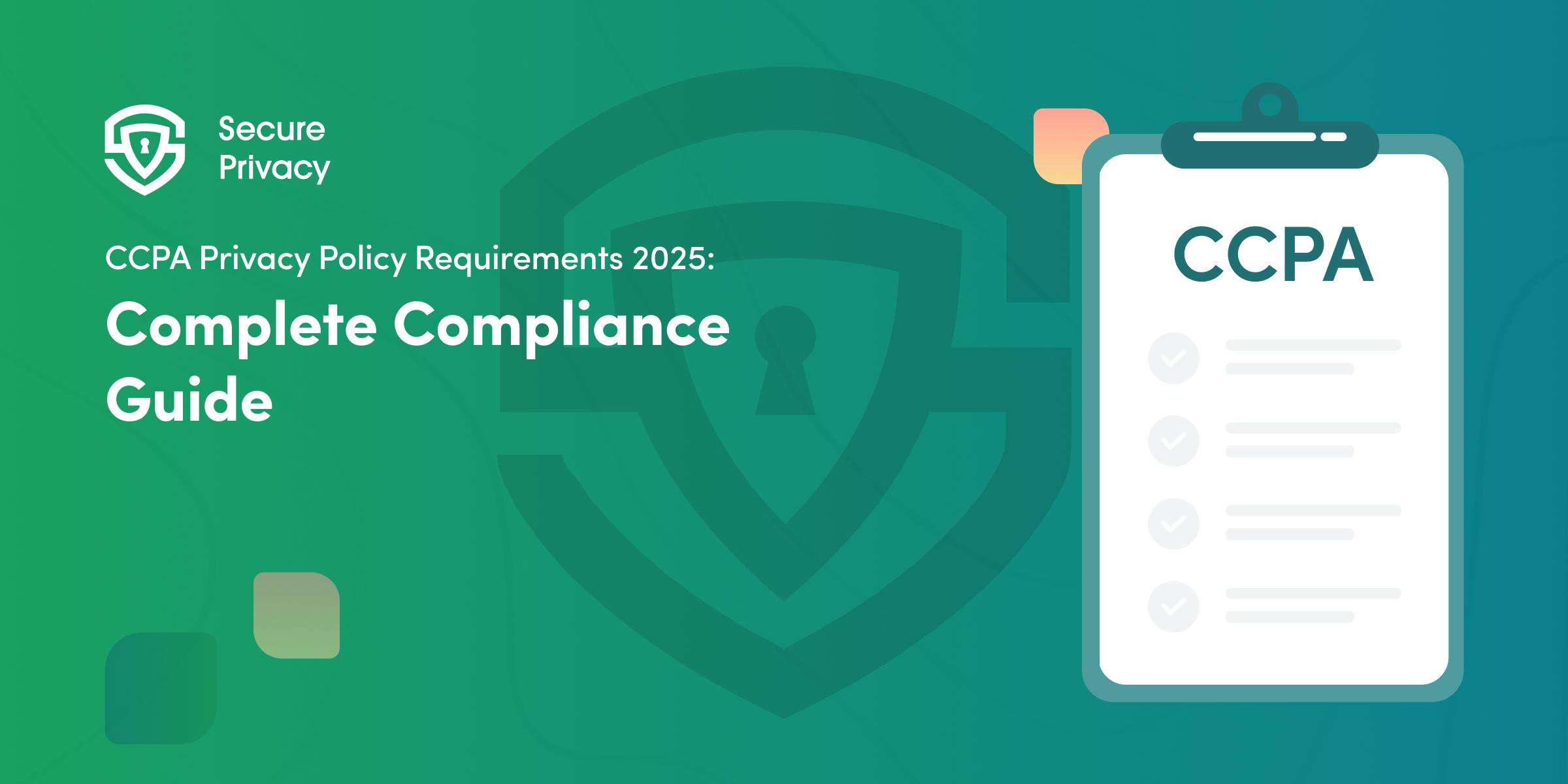Terms and Conditions vs. Privacy Policy | Secure Privacy
Terms and Conditions refer to expectations from you and your users. A privacy policy states how your users are protected. Ensure tracking compliance with a free demo here.
Every website and app needs Terms and Conditions and a privacy policy. Not having Terms and Conditions may expose you to legal risks, while not having a privacy policy is a violation of data protection laws.
It is important to understand that Terms and Conditions and privacy policy are not the same. They are often confused for one or the other but they have nothing to do with each other.
This leads to mistakes that could later turn into legal troubles. That is why every online entrepreneur should learn the differences between these documents.
This article explains what each of them is and what are the key differences between them.
What are Terms and Conditions?
Terms and Conditions (T&C) is a document that sets the rules under which your users can use the website or the app. They may also be called Terms of Service or Terms of Use. The user must accept them if they want to use the website or app.
Terms and Conditions is a “take it or leave it” contract offer from the business to the user.
If they accept it, the Terms and Conditions apply, and the user must behave accordingly.
If they don’t accept it, it doesn’t mean that the user can do anything they want on the website or the app. It means that they have accepted not to use the website or the app. The user has only two options: accept the T&C and stay, or leave.
When the user can access content for free, such as when they come to a blog to read an article, or use an app for free without creating an account, the mere use of the website or the app means implied consent to the Terms and Conditions.
If the user keeps on browsing the website or using the app, they indicate accepting the T&C. The business sets the rules and invites the user to use the website under those rules. If the user uses the website or the app, it indicates that they are fine with the terms. In legal terms, this is called a "browsewrap agreement".
On the other hand, when it comes to a purchase, you need to ask the user to accept the Terms and Conditions explicitly because you need to enter into an agreement with them. In such a case, the Terms and Conditions serve as a purchase agreement between the parties, and the business needs to ask the user to accept them explicitly. It is enough to ask them just to mark a checkbox. This type of contract is called a “clickwrap agreement”.
In some cases, businesses may have separate Terms and Conditions and a separate purchase agreement. In other cases, they may offer some clients a contract tailored to their specific business relationship. All parties are free to agree as they find fit.
Having a clickwrap agreement in place, such as a website Terms and Conditions makes things easy and simple for online businesses and their users. They are standard and non-negotiable. The user either accepts them or leaves.
The content in the Terms and Conditions largely depends on the specifics of your business and your products and services.
Ecommerce stores need to set the rules about the purchase straight. SAAS businesses need to define what the SAAS does and for what price. The T&C of a blog would revolve around intellectual property and disclaimers about the content.
In general, you’ll find the following elements in most T&C:
What the product/service is: The product or service provided needs to be clearly defined so that the user knows what they are paying for. Businesses benefit by setting clear limitations of what the user can expect to be provided with.
Eligibility: This section defines who can use the website or app. This, in general, may set out age limitations or geographical eligibility.
Rights and duties: The rights and duties of all parties involved (you and your users) need to be clearly defined, including expected behavior from both of you.
Intellectual property: Your website or app is full of your intellectual property, so you must explain to your users what they must not do.
Indemnification and limitation of liability: Businesses can mitigate the risks associated with operating a business by including provisions on indemnification and limitation of liability. It won’t save you from liability, but in the case of a dispute, it can significantly reduce your costs.
Governing law and dispute resolution: Disputes are not very common for online businesses, but if they happen, they may pose a risk to your business’ existence. That is why you need to set a governing law and a dispute resolution mechanism that suits you.
Business information: Tell your users who you are, including at least your company name and an email address where they can contact you.
As mentioned above, the T&C content varies greatly depending on the nature of your business. This list is not at all exhaustive.
What is Privacy Policy
A privacy policy is a document that describes your business’ privacy practices. Unlike the Terms and Conditions, the privacy policy is not an agreement. It is a notification that informs users what you are doing with their personal data.
That is why you don’t need to ask users to accept the privacy policy. From a legal point of view, such a request is unnecessary. If a user feels uncomfortable with the privacy practices employed by a business, they may decide to leave the website, stop using the app, or not provide any personal information through the website or app. Learn how to add a Privacy Policy button on a website.
If you want to collect users’ personal data using cookies and other trackers though, you need to ask for consent. The so-called acceptance of the privacy policy is not equivalent to a cookie consent. Just showing them the privacy policy is not enough unless you operate solely in the United States (see more on the requiresments for CCPA Privacy Policy).
Privacy policies usually contain any or all of the following elements:
Your identity: Users need to know who processes their data.
Which categories of personal data you collect: Businesses must inform users of the personal data they collect. This may include personal names, IP addresses, home addresses, email addresses, ID numbers, or any other identifiable information.
Why you collect personal data: These are your processing purposes, such as marketing, advertising, analytics, and so on.
How you collect personal data: You need to be transparent if you use cookies and other online trackers, or if the users must provide the data themselves, among other things.
With whom you share data: Inform them about the third-party tools you use for processing data. These tools have access to your users’ personal information, therefore they need to be informed about it. These third-party tools include Google Analytics (Learn about Google Analytics GDPR Compliance.) , Facebook Pixel, Hotjar, and others.
Data subject rights: Make sure you list your users’ rights and how they can exercise them.
International data transfers: If the applicable law requires that, tell users where you transfer their data.
This is not an exhaustive list. The actual essential elements depend on the applicable laws. They always prescribe what you need to tell users about.
Read about Cookie Compliance and Privacy Policy on Wix.
Terms and Conditions vs. Privacy Policy
To sum it all up, here’s a summary of the key differences between Terms and Conditions and a privacy policy:
- T&C govern the relationship between the business and the user. The privacy policy does not. It merely provides information about privacy practices and principles to the user.
- T&C are an agreement. The privacy policy is just a notice.
- T&C can be accepted or not accepted. There is nothing to be accepted or refused about the privacy policy.
Privacy Policy Generator by Secure Privacy
We provide users with a privacy policy generator with our Plus plan. The generator uses a template compliant with the laws applicable to your business. Then, based on your input, it generates a privacy policy. All you need to do is answer a few questions about your privacy practices with a few clicks. You can add a privacy policy to any website with Secure Privacy.

How Agencies Can Offer Privacy-as-a-Service
Your clients are drowning in privacy compliance requirements, and you're missing out on a $2 billion revenue opportunity. Privacy-as-a-Service is transforming how digital agencies generate recurring revenue while solving their clients' most pressing legal challenges.
- Legal & News
- Data Protection

CCPA Privacy Policy Requirements 2025: Complete Compliance Guide
California privacy law isn't optional anymore. With enforcement penalties reaching $7,988 per intentional violation and the California Privacy Protection Agency actively pursuing non-compliant businesses, getting your privacy policy right has become a critical legal obligation.
- Legal & News
- Data Protection

Microsoft UET Consent Mode: What It Is & How to Stay Compliant
Your Microsoft UET Consent Mode setup might be facing new compliance deadlines that could shut down conversion tracking if you're not prepared. Since May 5, 2025, Microsoft requires explicit consent signals for all visitors from the European Economic Area, UK, and Switzerland, regardless of where your website is based.
- Legal & News
- Integrations
